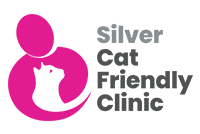Dogs with this common skin disease will show a variable degree of itchiness. Inflamed ears, feet, belly, groin and armpits are the typical affected areas. Self-trauma from biting and scratching plus secondary bacterial and yeast infections all worsen the itchiness and can significantly affect your dog’s comfort and enjoyment of life!
The below information is intended for owners whose dogs are suspected to have allergic dermatitis caused by environmental allergens (e.g. grass or pollen allergies or indoor dust mites allergies). There are several other causes for similar itchiness which your vet will consider first. For example, skin scrapes and bloods may be taken to rule out sarcoptic (fox) mange mites and a strict diet trial will be needed to rule out itchiness due to food allergy. Bloods can be taken to suggest what your pet may be allergic to, however, we have to be aware that false positive results are possible.
Atopic dermatitis can take some time to diagnose whilst other causes of itchiness are ruled out. It is important to know that this disease can only be managed, it CANNOT BE CURED. Once a diagnosis has been made, however, there are several actions and medications that can significantly reduce the itchiness for your dog. It is common to use a combination of the recommendations below to improve your dog's comfort. Here we provide an overview of the options for you to consider which may then be discussed with your vet at Shires Vets. Costs and practical factors all need to be considered alongside the severity of your pet’s itchiness. Treatment efficacy percentages stated below are estimates from experience and published studies.
Allergen avoidance
For dogs allergic to outdoor allergens (e.g. grass and tree pollens) avoidance is nearly impossible, however, washing/wiping off your dog's feet and body after walking in grass/ outside may help remove some allergens. If blood tests highlight indoor house dust mite and storage mite allergy then several things can be done to help reduce exposure. The avoidance tips below are rarely a complete treatment in themselves but can be used in conjunction with other treatments.
- Use a plastic cover over the pet's bed
- Use a filtered vacuum cleaner
- Use hypoallergenic mattress and pillow covers
- Use anti-mite spray in areas of the house where the pet lives (e.g. Indorex, available to purchase through Shires Vets)
- Wash bedding in very hot water (>70C)
- Avoid letting pets sleep on stuffed furniture
- Avoid stuffed toys
- Freeze soft toys for 24 hours every month
- Keep pets in uncarpeted rooms
- Run air conditioner during hot weather
- Kennel dog outside
Steroids (e.g. Prednisolone, Medrone)
These are of low cost & high efficacy (~90%) however high side effects risks (increased thirst, urination and appetite, panting, pot-bellied, skin thinning and susceptibility to skin infections, liver, kidney and intestinal effects) when used in the long term. Available in tablet form.
Antihistamines (e.g. Piriton, Tavegil)
These human drugs can be used ‘off licence’ in dogs and are ~20-30% effective. Drowsiness is the main side effect. Tablet form. Low cost and available from Shires Vets or your local chemist.
Cyclosporin (e.g. Atopica)
This is a licensed veterinary drug with high efficacy (~80%) and high cost (eg ~£90/month for a 10 kg dog; £260/month for a 30 kg dog). Tablets or liquid forms. Allow 6-8 weeks before can fully judge if effective. Cyclosporin uncommonly causes side effects (sickness & diarrhoea most common, overgrowth of gums, muscle weakness or cramps – resolve with stopping treatment).
Oclacitinib (e.g. Apoquel)
This is a licensed veterinary drug with high efficacy (~80-90%) and moderate cost. Tablet form. Uncommon side effects include vomiting, diarrhoea, and anorexia.
This drug was released in early 2014 and at Shires Vets we have multiple dogs successfully managed with the drug, however, there have been significant production issues. Please discuss with the vet as to whether this option is currently available.
Desensitisation vaccinations
From the blood test results a vaccination can be ordered containing tiny amounts of these allergens which are injected under the skin to your dog initially twice weekly then monthly to desensitise your dog to the allergens. If successful it would then be maintained monthly lifelong. 25% are controlled with vaccinations alone, and 50% show benefit from vaccination (reduced pruritus). 2- 9 months before the benefits are seen. Moderate costs (~£250 for the vaccine for 1st ~12 months then ~£200/yr for monthly top-up injections). Uncommon side effects (rare anaphylactic reaction to vaccine).
Essential Fatty Acids
In food tablets/ spray. 10% effective. Relatively cheap, no real side effects (occasional diarrhoea).
Managing secondary skin infections
Antibiotic courses are sometimes required to treat secondary bacterial infections. Medicated veterinary shampoos to control secondary yeast and bacterial infections (eg malaseb/ microbex).
Shampoos to sooth irritated skin
These can be used twice weekly to help manage itchiness. (e.g. Allermyl & other quality veterinary shampoos are available at Shires Vets). Fairly effective alongside other treatments. Low- moderate cost.
Steroid spray (e.g. Cortavance)
This can be used to target especially itchy areas. Moderately effective and some costs. Good for when one location of hairless skin (e.g. on the belly) is affected.
Regular flea treatments
Although your pet may not be allergic to the fleas themselves, flea bites can trigger flares of allergic skin disease and a veterinary flea treatment should be applied regularly to all atopic dogs.
Anal glands
Many dogs experience bottom irritation due to full anal glands. Those affected should have their glands emptied regularly (ask your vet!) to reduce itch stimulation on overall skin condition.
The above information is intended for owners of dogs who are under the care of Shires Vets. The information is for guidance and consideration only and should be discussed further with your vet.










